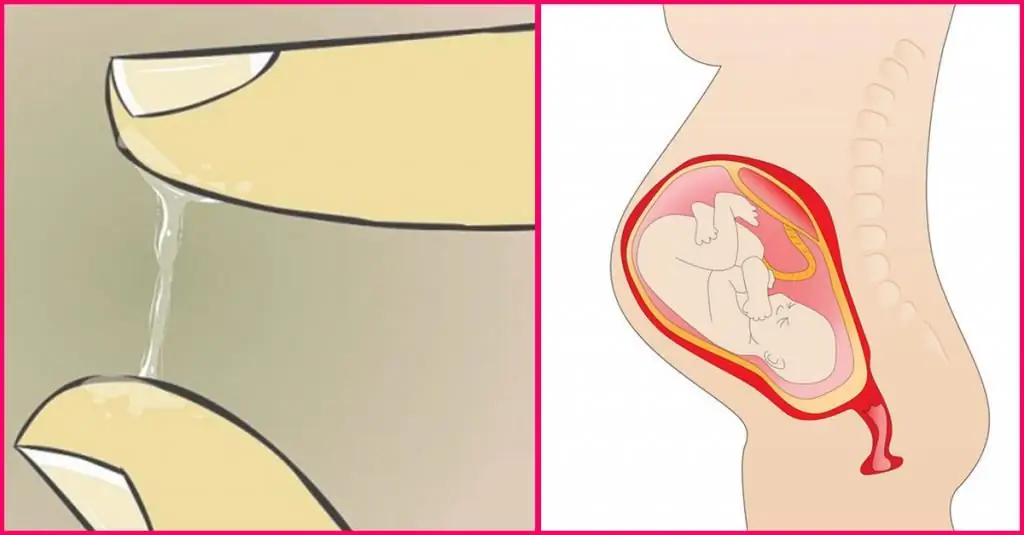2025 Author: Priscilla Miln | [email protected]. Last modified: 2025-01-22 17:55:21
In modern textile catalogs, you can often see exotic novelties with attractive names: devoré, cupra, dillon chiffon. Meet one of them - lacoste fabric.

What does lacoste fabric look like?
The description of a fabric from one clothing catalog is: "knitted fabric with a warp knit, octagonal or other weave." In fact, everything is easier. Many have probably seen this fabric: it's just a loose knit, more airy and lighter than the usual, reminiscent of waffle fabric or mesh. It can be very dense, hard, and can be soft and airy. This fabric can be used for any light garment, but it is already so strongly associated with sports that it is most often used for making dresses and polo shirts, tracksuits.
Lacoste fabric and pique: what's the difference?

There is no difference between these two types of fabrics. One name is more official, and the other is popular. In Western catalogs, you can often even find such a description of the material: “LACOSTE PIQUE” (lacoste pique). Acquainted with the properties of pique fabric,you will learn everything about lacoste fabric, which, by the way, is also called lightweight French knitwear. The word pique comes from the French piquer (to stitch). So called knitted fabric with a complex weave. It does not matter at the same time what material it was made of: natural cotton or synthetics. Although at the beginning of the twentieth century, synthetic fibers were just beginning to appear. The weave could be different: in the form of rhombuses, hexagons, squares. One of the varieties of pique is the widespread and familiar waffle fabric. There are types with scars. There is a pique for making children's clothing and a dense pique with a fleece. This type of fabric is highly durable. It can be machine washed. Also, thanks to the structure, it almost does not wrinkle.
But why is pique fabric called "lacoste"?
The new life of pique began when the famous tennis player, René Lacoste, decided to create a new, more comfortable uniform for sports. Before that, tennis players looked very elegant. But, alas, the long sleeves of the traditional shirt had to be rolled up, and the dense, inelastic fabric hindered movement. For his model, Lacoste chose light and comfortable piqué cotton, which, nevertheless, kept its shape. He demonstrated a novelty in 1926 at one of the championships. The new shirt was liked by the public, especially the athletes, who immediately began to adopt a new comfortable style. The polo players showed the greatest enthusiasm. And with the growing democratization of society and the desire of young people for freedom, the polo shirt, and along withher and pique, have become popular all over the world. Today, Lacoste polo shirts are considered elite in their class and are in great demand. This is probably why the pique fabric, characteristic of these shirts, has acquired another name among the people - "lacoste fabric".

Composition
According to some sources, Lacoste fabric is knitwear with a special weave, which avoids loss of shape or the appearance of spools. Made exclusively from organic cotton. Other sources say that it is composed of cotton, polyester and viscose. And this is also lacoste fabric. The description in the third source clearly indicates that this is the cheapest fabric possible: it is 100% polyester. Actually there is no confusion. Sellers and buyers often say “lacoste fabric”, but they mean pique - a type of weave of knitted fabric, which, as you know, can be made from a variety of fibers: cotton, woolen, half-woolen, viscose, silk, nylon, etc.
Cotton, wool, corn

There is also a lacoste fabric "corn". In fact, this is all the same knitted pique, which is made from corn fibers. Despite the fact that this material is natural in origin, it undergoes such changes during the production process that it can be considered synthetic. However, it still remains environmentally friendly in the end. The production process is simplified as follows: dextrose is extracted from corn, then itferment and produce lactic acid, from which water is subsequently removed and fiber is made. The fabric is extremely soft and stretchy. But this is not all of its virtues. It perfectly absorbs moisture, while drying in a matter of moments. Fabric made from corn is dyed in the brightest juicy colors - it does not fade over time, even if it is constantly exposed to the sun. Even allergy sufferers can wear this fabric, and the choice of products that can be sewn from it is very wide: suits, dresses, blouses, skirts, hats. Lacoste "corn" has not yet gained wide popularity, but only because it did not have time. This material is eco-friendly and comfortable, like natural fibers such as silk, cotton or wool. At the same time, it has a low price, is easy to care for, like synthetic fabrics.
Lacoste fabric quality

As mentioned above, if we mean by Lacoste fabric only the pique knitwear from which things of the famous Lacoste brand are sewn, then yes - this is really high-quality elite knitwear, great to wear and use, does not wrinkle and does not lose shape. But if under the name "lacoste" we mean only the type of interweaving of threads of the material, then the quality of the fabric will be completely different. Pay attention to the composition: polyester, blended fabric, cotton, what kind of cotton? It is on this that the properties that lacoste fabric has depend. Does the material stretch or not? In general, pique is a rather dense and durable fabric that keeps its shape perfectly (remember the strictpolo shirt collars). But pique is very different in density. The most dense types are rather hard to the touch, they stretch only with effort. The thinner the pique, the more it looks like regular knitwear, which stretches well in width. But still, pique is a looser material, so soft-fitting, but not tight-fitting things are usually sewn from it. Today, there are pique options with elastane - more plastic. They are quite suitable for sewing light summer dresses, tunics, blouses, skirts and children's clothing.
So, lacoste fabric, French knitwear, pique knitwear - three names for the same material, which can be so different in its properties that three names are clearly not enough.
Recommended:
What does a gypsy needle look like and where is it used?

Gypsies didn't always beg. There was a time when they worked hard and hard. They traded various products that are necessary for a person. They were sewn with gypsy needles. And where did this name come from? Now we'll find out. We will also tell you where this thing is used
Why does a dog shake its head and scratch its ears?

Many animal lovers cannot imagine their life without a pet. Someone loves parrots, someone loves cats, some even love spiders and snakes. Most often, however, dogs are bred. This is due to the fact that these animals are considered human friends, have a good character, protect their owners and bring a lot of joy to adults and children
What does a British cat look like and how long does it live?

Those who have ever seen a British cat turn into true fans of these graceful animals endowed with aristocratic habits. Representatives of this breed are distinguished by excellent he alth and outwardly resemble teddy bears. After reading today's article, you will find out how British cats look and how long they live
How deep is the hymen and what does it look like

How deep is the hymen? What is it and in what cases does defloration occur, that is, a violation of this membrane? In this article, we will tell you what the hymen really is, and also answer many quivering questions that are not customary to talk about even in secret
Cork during pregnancy: what does it look like and how does it go away?

During the formation of the embryo, many natural and unnatural physiological processes take place. For example, the absolute norm is the discharge of a cork during pregnancy. This article will talk about what it is, and why are all expectant mothers waiting for her to leave?

